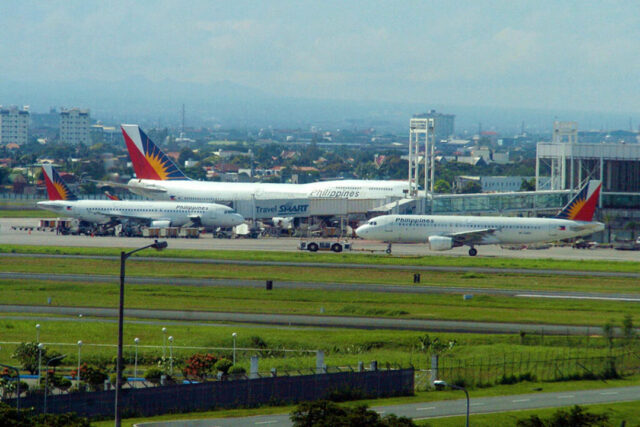ACCORDING to a working paper from the Ateneo Policy Center entitled, “Toward Increased and Stable Investments in National Security in the Philippines”: “Policymakers tacitly accepted that with the US presence in the country, coupled with the PH-US Mutual Defense Treaty; America has assumed the role of our security guarantor against a potential external adversary.”
This ironclad dependence on the United States (US) is deeply ingrained in how Filipinos conceive of national security and has fostered complacency amongst its political leaders with regards to national defense. Indeed, over-reliance on the former colonial master has made establishing a self-reliant defense force extremely challenging.
Pertinently, the paper also asserts that, “The departure of the American forces revealed the Philippines’ poor external defense capability. This was underscored when the Chinese took over the Philippine-occupied Mischief Reef in 1995, which compelled President Fidel Ramos to push for the Republic Act 7898 or the AFP Modernization Act.”
The modernization of the Armed Forces of the Philippines (AFP) is an ongoing project. Significantly, President Ferdinand “Bongbong” Marcos, Jr., in his keynote address at the Shangri-La Dialogue in Singapore a few weeks ago boldly declared:
“Under our Comprehensive Archipelagic Defense Concept, we shall develop our capacity to project our forces into areas where we must, by constitutional duty and by legal right, protect our interests and preserve our patrimony.”
At this point, it must be emphasized that according to Article II, Section 3 of the 1987 Constitution:
“The Armed Forces of the Philippines is the protector of the people and the State. Its goal is to secure the sovereignty of the State and the integrity of the national territory.”
The urgency of the AFP Modernization program is obvious given the troubles in the West Philippine Sea. And President Marcos’ declaration could not have come at a better time as this initiative has been significantly slowed down by economic crises and recurring political turmoil. But for the upgrading process to really take a massive step forward, graft and corruption in the military must be confronted directly.
In 2011 the Philippine Center for Investigative Journalism (PCIJ) ran a three-part series on corruption in the AFP. This passage from the first part aptly summarizes this grim problem:
“But reforming the military has proven to be an even more difficult task. In the last few weeks, in fact, the stigma of corruption has hung over the armed forces, with the highest levels of command accused as the predators, and troops of the lowest ranks and taxpayers, their prey.”
Corruption in the military was so rife then that the late Senator Miriam Defensor-Santiago sarcastically rebranded the AFP as “predators of the people and the State” in a privilege speech, a scathing twist on the constitutional prescription cited earlier. Unfortunately, the specter of corruption has hounded the AFP ever since.
During the administration of President Benigno “Noynoy” Aquino III, top defense and military leaders were accused of scuttling a weapons deal that was meant to be the Philippines’ primary defense against Chinese incursion in the West Philippine Sea, in favor of purchasing helmets, night goggles, body armor, and radios to be used in the counter-terrorism effort.
A close aide of then President Rodrigo Duterte became the subject of a legislative inquiry on allegations that he intervened to favor a supplier of a combat management system for the two navy frigates to be purchased by the government. Nothing was proven and no cases were filed, and the aide was elected to the Senate.
It must be stressed however, that the rapacious appetite of public officials to steal from the public coffers wreaks havoc in every nook and cranny of the government. As per the seminal paper, “Grand corruption scandals in the Philippines”:
“Despite governance reforms through decades of restored democracy, many government institutions are still easily influenced by powerful vested interests.”
This extract from part two of the PCIJ series is a painful reminder of the AFP’s vulnerability to these “powerful vested interests”:
“But the Philippines’ post-1986 presidents not only tolerated the corruption in the AFP, friends and associates of some of them are said to have even pushed some big, questionable contracts onto the military.
“Beginning 1986, vested political interests started cornering AFP projects particularly in the acquisition of aircraft, boats, munitions, vehicles, and communications equipment.”
Unfortunately, the long list of government corruption scandals just naturally engenders fear that the funds dedicated for national security will be compromised. And even though corruption in the military may no longer be as rampant as it was during the administration of President Gloria Macapagal-Arroyo, severe anxiety still hounds the $35-billion budget that President Marcos has set aside for the modernization program.
Clearly, the operational and logistical decisions on how this money will be spent must be geared towards improving the AFP’s capability to defend an archipelagic state like the Philippines and to protect a potentially high yielding maritime economy. Therefore, the procurement process, no matter how protracted, must never deviate from this goal. Otherwise, the Philippines stands to lose more than its battle to defend the West Philippine Sea.
The reality is Beijing will continue to display its naval superiority. And it will not cease employing dangerous and unprofessional maneuvers in the West Philippine Sea. But this fact should not be used as a justification for reviving our over reliance on the US for external defense. In fact, the Mutual Defense Treaty should serve as an uncomfortable reminder of the failure of successive administrations to establish a self-reliant defense posture for the Philippines.
The primary objective must unequivocally be to become a maritime powerhouse in the region. Every major state staking a claim in the South China Sea has a robust and respectable naval force, except the Philippines. If this does not change, then malicious and aggressive incursions by foreign ships in the West Philippine Sea will persist.
The David versus Goliath metaphor that is constantly being used to rationalize the disparity between the navies of China and the Philippines is really not helpful. The David in the current context will never beat Goliath with just smarts and unshakeable faith. He must be a Goliath himself to secure the victory he so desperately needs.
Thus, today Filipinos face the supreme challenge of making sure that the military leadership make decisions based on national defense requirements and nothing else. And, of course, that gargantuan task of protecting the AFP Modernization program from graft and corruption. Voters must take to heart that the failure to do so would be utterly catastrophic for future generations of Filipinos.
Michael Henry Yusingco is a law lecturer, constitutionalist, and senior research fellow at the Ateneo Policy Center.























